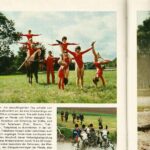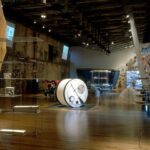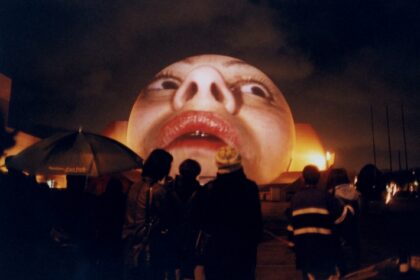From Freehouse to Neighborhood Co-op: The Birth of a New Organizational Form
Sue Bell Yank
One year ago I was invited to “Radicalizing the Local,” a gathering in Rotterdam described as the “international closing symposium of the Freehouse art project on co-ops as an organizational form in order to combine value determination, local qualities, organization, art economy, initiative, and co partnership.” This sounded great, if a little confusing, but once I understood that this symposium was connected to the twenty plus years of urban development and artistic research efforts initiated by artist Jeanne van Heeswijk in 1998 in her native Rotterdam, I was intrigued. The event marked the handover of Freehouse to a self-organized, resident-run Wijk (Neighborhood) Cooperative, which would continue the economic development and community organizing work of the art project and scale it up. Though often touted as a desired outcome in place-based social practice work, the actual birth of a truly self-run organization that is the outgrowth of artistic thinking around urban development is like a unicorn—a fairy tale creature that may not actually exist. The opportunity to witness the formalized “handover” to such an organization and my curiosity about the Co-op’s development over time was the impetus for my original visit to Rotterdam, and for the research that follows.
Freehouse Origins
Much of the work of Freehouse predates the concept of “creative place-making” that is so ubiquitous in discussions around urban planning. A notion at once pursued by city planners and touted by the likes of Richard Florida, creative place-making has outcome problems (one such criticism being that neighborhood vibrancy indicators can rarely be proven to lead to economic growth or crime reduction).[1] Freehouse, however, was able to work on a small scale with collectives and individuals to achieve demonstrable success. This success related not to the instrumental value of art and artists as a means to catalyze profit or investment, nor to the idea of art as possessing an intrinsic value (art for art’s sake). Rather, it was due to a process that enhanced the opportunities afforded to people in the neighborhood to improve their social well-being. In short, Freehouse was able to provide more choices to people about what lives they would like to lead and how. It is no accident that this effort was called Freehouse—the working process relied on individuals to autonomously determine their own economic priorities, while also aspiring to expand that choice in the long term for the community as a whole.
The name of the project derives from the historical free trade zones of the nineteenth-century Austro-Hungarian Empire, where informal economies flourished and diverse creative networks thrived. Some bars in England are still called “freehouses,” and are so named because they are purveyors of multiple beers (rather than being beholden to a single brewery).[2] This kind of conceptual zone and its layered relationships to art, craft, culture and economy was the genesis of Freehouse, which was founded in 1998 as a Rotterdam-based art and research association. At the time of its formation, Rotterdam was well into its transition from a worker’s city tied to its ports and industry, to a so-called “creative city.” Increasingly it has become a city of festivals, of design and creative industry, and this new direction was solidified in the 2007 unveiling of a new Vision for the City 2030 by the City Council of Rotterdam, which recommends that Rotterdam become less economically dependent on the port and invest in knowledge and cultural industries in order to promote a “more attractive residential city.”[3] This trend mirrors similar developments in many post-industrial cities in the global North. Though its intention may not be explicitly regressive, without offering creative skills-based opportunities and a strong cultural infrastructure to the current residents of the city, rather than to an influx of new, upper middle class professionals, the notion of a creative city does little to catalyze economic growth for the vast majority of its residents (many of whom will instead face precarity and displacement).[4]
Rotterdam academic Henk Oosterling developed the idea of a Rotterdam Skillcity (Rotterdam Vakmanstad), which directly addresses this class bias and displacement as a result of gentrification by tapping into existing informal economies of craft and production.[5] By legitimizing the informal cultural activities of existing residents, Rotterdam Skillcity hopes to combat displacement by providing opportunities in the new creative economy. Freehouse worked in collaboration with Skillcity for a time, and shared values with this skill-based, capabilities-centered approach to the creative city. Freehouse began its work by studying informal cultural activities and production at the granular level, eventually conducting an exhaustive survey (called the ‘Monsterboek’) of the intercultural exchanges, economies, and networks of resilience on the Rotterdam West streets of Kruiskade/Nieuwe Binnenweg. They found several major challenges to skills development and cultural opportunities within the city. The first was a lack of infrastructure capable of supporting collective rather than individual activity (i.e. community kitchens for home cooks to produce and market together, shared studio spaces that promote the formation of sewing or crafting collectives, even shared zones for trading goods and knowledge). The second challenge involved the presence of regressive governmental policies and regulations that actively quashed creative skills development and small business opportunities.
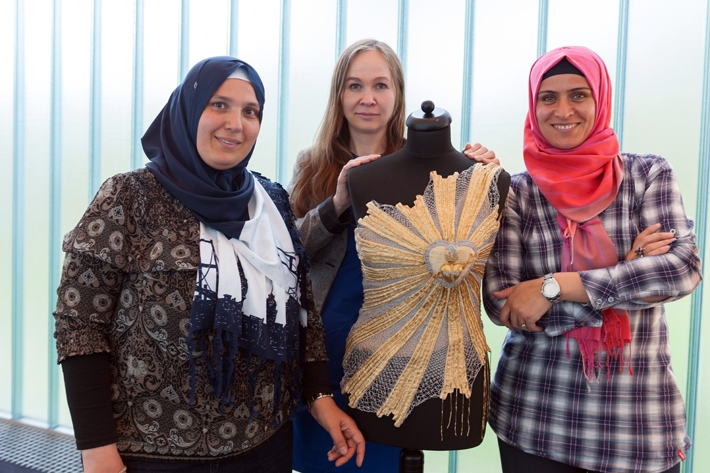
Freehouse Transition
With the advent of the 2008 global economic crisis, which exacerbated these already disturbing trends, Freehouse transitioned from research association to a practical lab focused on testing strategies in the Afrikaanderwijk, a low-income, multi-ethnic neighborhood in south Rotterdam bursting at its seams with vibrant cultural products and activities (and even boasting a huge weekly market). Unfortunately, many of these cultural products couldn’t be sold or displayed at the market due to restrictive regulations and onerous permitting rules. Freehouse focused its efforts around the highly regulated Afrikaanderwijk Markt, in which a single stall owner could not perform two actions (like selling fresh fruit as well as juicing that fruit on site) because of a one-permit per-stall limit imposed by the city government. Over one hundred such conflicting policies limited the creative and economic activities of vendors, so Freehouse organized over three hundred interventions (which artist van Heeswijk described as “acts of civil disobedience”) that actively challenged such restrictions. They also went door-to-door in the neighborhood to research and identify the unrecognized skills and capabilities of its inhabitants—the jam-makers, the weavers, the designers, the painters, the writers, the poets, and the spoken word artists—and facilitated opportunities to both sell goods and showcase talent. Finally, they opened a series of collaborative workplaces that still run today: a collective kitchen, fashion atelier, and a neighborhood store.[6] By creating the conditions for collaborative production that allowed individual makers to pool their resources and legitimize their informal businesses, they were able to catalyze new forms of neighborhood organization that had the capacity to benefit from, and reinvest in, the local economy.
The Wijk Co-op
In 2014, at a moment marked by the January conference, Freehouse made the decision to hand over the bulk of these activities to a formalized Wijk (Neighborhood) Co-operative, a self-organized and self-run body that would continue the work of creating local, self-produced economic opportunities for the neighborhood, leveraging political power to shift policy and negotiate economic advantages, developing local skills and self-certifications, and strengthening resilient intercultural networks. One of the first neighborhoods in the Netherlands with a majority of immigrant residents, the Afrikaanderwijk sprung up around 1900 following construction of the docks in South Rotterdam. Housing mostly working-class dockworkers, its name derives from the South African-inspired street names in the district. The many residents consist primarily of Turks, Moroccans, Surinamese, and Antilleans, many of whom immigrated in large numbers in the 1970s to work at the dockyard. In the 1970s and ‘80s, the Afrikaanderwijk experienced a series of tensions between native (white) Dutch and so-called “foreign” residents over scarce housing resources; landlords were accused by some white Dutch residents of renting to migrant workers and excluding native Dutch. Residents clashed when native Dutch residents came into immigrant boarding houses and evicted them and their belongings forcibly. The city responded to these disturbances by instituting a short-lived policy that limited the number of “foreign” residents within neighborhood limits (it was later overturned by the national government), but many of the underlying tensions remain. The Afrikaanderwijk retains its international character today, displayed through the many Turkish restaurants, kabab places, and African goods and cultural items on sale at the weekly market, but many second-generation immigrants struggle with low education levels and the disappearance of working-class jobs.[7]
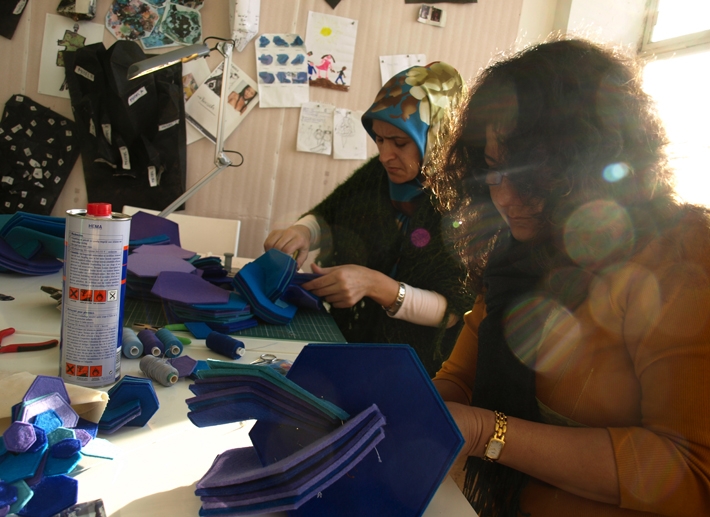
The needs of the Afrikaanderwijk and its cultural capacities necessitated a new organizational form (as well as new economic forms) on the scale of a neighborhood rather than that of an interest group. It is no accident that the foci of the symposium were “organizational” and “economic”. As conference participants experienced a plethora of presentations by international academics, artists, and cultural innovators on organizational and economic forms as distinct as Bitcoin, the history of European co-operatives, transnational citizenship, and institutions of collective action, we smelled wafts of delicious Turkish and Moroccan cuisine prepared by women at the collective kitchen. By focusing on such generalized ideas about cooperative culture in a conference dedicated to the context-specific nature of the project, the organizers intended to situate Freehouse within a history of collective action without overtly telegraphing that connection. Conference participants were forced to apply this overarching framework to what they saw happening on the ground in the Afrikaanderwijk.
Local residents, students, and academics had ample opportunities for exchange throughout the conference, and their interactions supplied grist for the mill of critical conversation. We witnessed the formal inductions of neighborhood residents into the Wijk Co-op and its sub-organizations (the Workers’ Co-op and the Service Co-op).[8] We toasted their good fortune, and danced to the music of local musicians. As such gatherings are intended to do, we left with a rush of good feeling, full of heady optimism for the future success and sustainability of the co-produced neighborhood. But in the year since the formal handover, how has the Wijk Co-op fared? What is the continuing role of Freehouse in its organization? Has this robust arts institute been able to take a backseat in a collective decision-making process that involves many class levels, cultures, economic agendas, skills and access points? And what success has the Co-op achieved in the past year to demonstrate the viability of a self-run collective on the scale of a neighborhood? This article attempts to analyze these questions through both quantitative and qualitative indicators gleaned from a series of interviews from fall of 2014 and related documents.
First, though a caveat: although I am a long-time follower of both Freehouse and Jeanne van Heeswijk’s other work, my only personal on-site experience of Freehouse was at the closing symposium for three days last year, when I interviewed several newly inducted Co-op members and Freehouse staff. I spoke with Heeswijk several times since then about the project, and more recently to Annet van Otterloo, Radjesh Roepnarain, and Ramon Mosterd, who all work in varying capacities with both Freehouse and the Wijk Co-op. I am exceedingly aware of the gaps in my knowledge due to my inability to experience the day-to-day relationships and processes that form these organizations. This is one of the key challenges in investigating long-term, neighborhood level efforts like this. They are defined by so many constantly shifting, interlocking variables that a more complete accounting might even elude writers with unlimited resources and infinite social capital, neither of which I possess. So, rather than a strict evaluation of the project, this will be a sketch at best. What I do hope to uncover, however, are the most appropriate criteria through which to evaluate such an organization, as well as the kinds of methodologies that would be most effective or appropriate for such an evaluation.
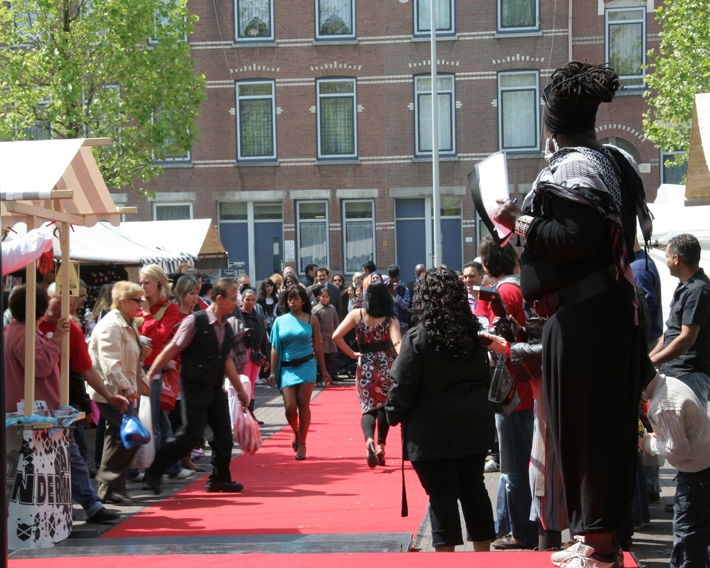
A Capabilities Approach
More and more artist-initiated urban development and community advocacy projects in the public sphere live beyond the artist’s day-to-day involvement (like Tania Bruguera’s Immigrant Movement International and Rick Lowe’s Project Row Houses) or don’t (Thomas Hirschhorn’s dismantled Gramsci Monument, and the now-defunct Watts House Project). As these projects become more ambitious, it is more important than ever to understand what metrics of organizational success can lead to a self-sustaining, self-determining, collectively-run social good organization. We often get stuck in questions of whether something is or is not art, we argue about its aesthetic value, we interview its temporary participants about how it affected them, but we rarely analyze how these projects are handed over to other groups and made sustainable in the long-term. Is it practical for all the decision-making, fiscal responsibility, and goals of these projects to be taken over by the communities they engage without the direction and oversight of the initiating artist(s) or institution? Is it even possible?
In order to begin this analysis, however, we must consider each organization on its own terms. Not as “art” writ large, nor as revolutionary or activist bodies per se. Freehouse (and subsequently, the Wijk Co-op) is a specific product of Rotterdam, though its activities resonate more broadly, and it is not opposed to official desires for a “creative city.” It is not overtly seeking to be a political adversary of the city government. Rather, the Wijk Co-op addresses gaps in governmental thinking about the well-being of the residents of the Afrikaanderwijk, and adheres to a wider-ranging set of values. These values primarily concern quantifying the capabilities of its residents rather than the tiresome logic of using economic indicators to measure social well-being. The indicators typically used by government include income, employment levels, home ownership, and dependency on social welfare. By inventorying the marketable skills of its residents and providing the organizational infrastructure to monetize those skills locally, the Wijk Coop portrays the residents as productive cultural actors rather than parasites on the state. This infrastructure also offers an alternative to externally imposed forms of economic development, ensuring that the local economy reinvests in its own organic growth based on its inherent capabilities.
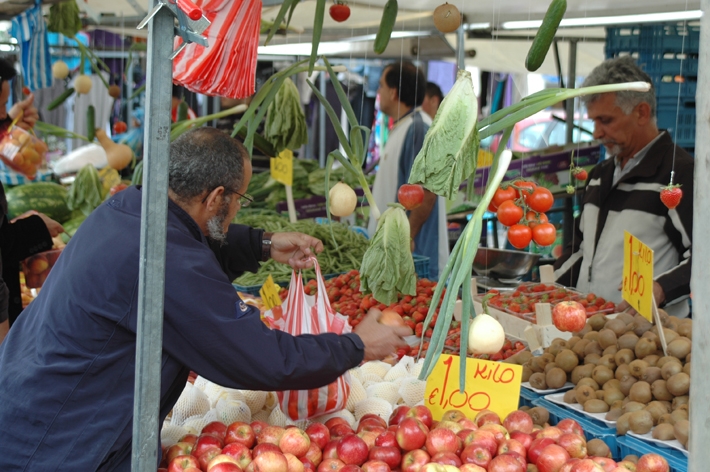
In his sociological studies, Amartya Sen equates educational and experiential skills development with freedom—he defines “capability” as a person’s ability to translate the types of choices open to them into the kinds of lives they would ultimately like to lead. Martha Nussbaum, a philosopher, came to similar conclusions in her description of a “capabilities approach,” defined in collaboration with Sen. She makes a distinction between functionings, which are the real “beings” and “doings” of human well-being. For example, a person can “be healthy” or “be warm,” and they can do certain things like “go to the doctor” and “consume energy.” Capabilities are a person’s “substantive,” or real freedoms to achieve functionings, such as the freedom to live a long life, or participate in politics. These capabilities are opportunities that people have reason to value, and that allow them to live the lives they would like to lead, rather than those defined by utility or access to resources. Capability differs from capacity in that it is not inherent, but rather a combination of societal opportunity, and the ability to make choices around that opportunity in order to achieve desired outcomes of personal value.[9]
Philosopher Ingrid Robeyns (who teaches, interestingly enough, at Erasmus University in Rotterdam) argues for a more general approach, renaming the “capabilities approach” to “capabilitarianism,” as she describes it. She wishes to expand the capabilities approach to a framework that applies broadly to society as a guiding political and moral philosophy, in contrast to utilitarianism she describes such a framework as entailing “two core normative claims: first, the claim that the freedom to achieve well-being is of primary moral importance, and second, that freedom to achieve well-being is to be understood in terms of people’s capabilities, that is, their real opportunities to do and be what they have reason to value.”[10] Though this humanist view may seem overly broad and unquantifiable, I argue that Freehouse interprets neighborhood well-being (including but not limited to the provision of an economic infrastructure necessary to achieve these opportunities) in a very similar framework, and that quantifiable metrics can be derived from its elements. Nussbaum’s published series of elements that make up the capabilities-centered approach are described by Robeyns as: (1) To treat each person as an end, rather than looking at averages; (2) to focus on choice or freedom rather than achievements; (3) to be pluralist about value, which implies that different capabilities are incommensurable; (4) to be deeply concerned with entrenched social injustice and inequality; and (5) to give a clear task to government and public policy.[11]
These elements provide a helpful starting point in generating a set of criteria through which to evaluate the evolution from Freehouse to Wijk Coop, but any more developed evaluation must also include some analysis of the physical and political context for the Co-op’s activities. In some ways the Wijk Coop is a reactive body—it has had to step in to compensate for the failures of the distributive, regulatory, and political systems of accountability that have not proven effective in enhancing the well-being of its members. So if the social well-being of the neighborhood’s residents is the ultimate goal of the Wijk (as I am claiming it is and should be), and if well-being is defined in terms of people’s capabilities, or “their real opportunities to do and be what they have reason to value,” then the steps the Wijk Co-op has taken towards achieving this goal and the processes through which they operate are key sites of evaluation. I believe Nussbaum’s five elements suggest four evaluative categories as they apply to the Co-op: (1) “to treat each person as an end, rather than looking at averages” and (3) “to focus on choice or freedom rather than achievements” both concern the self-organized nature of the co-op and its organizational form. Can this kind of neighborhood-scale organization become flexible and pluralistic enough in both its values and processes to stay relevant to each of its members and their individual needs? The third point, “to be pluralist about value, which implies that different capabilities are incommensurate” concerns the elasticity of what the Co-op considers “value” to its members. What is of value and appropriate for different members of the Co-op, when each might be coming to the organization with different levels of access to resources, both economic and cultural? Nussbaum has argued that different capabilities are incommensurable, meaning that each is an absolute entitlement and cannot be traded off against one another or overridden by other normative considerations. This makes it difficult for an organizational body like the Co-op to weigh one capability as more valuable than another. In addition, the “capabilities approach” is meant to be holistic, so that opportunities are taken as a set rather than piecemeal.
In its entry on the “Capability Approach,” the Stanford Encyclopedia of Philosophy offers an example:
…suppose I am a low-skilled poor single parent who lives in a society without decent social provisions. Take the following functionings: (1) to hold a job, which will require me to spend many hours on working and commuting, but will generate the income needed to properly feed myself and my family; (2) to care for my children at home and give them all the attention, care and supervision they need. In a piecemeal analysis, both (1) and (2) are opportunities open to me, but they are not both together open to me. The point about the capability approach is precisely that we must take a comprehensive or holistic approach, and ask which sets of capabilities are open to me, that is: can I simultaneously provide for my family and properly care for and supervise my children? Or am I rather forced to make some hard, perhaps even tragic choices between two functionings which both reflect basic needs and basic moral duties?[12]
Political philosopher Achin Chakraborty advocates using a “democratic or social choice” system to aggregate or weigh capabilities against one another in order to determine priorities for action, meaning that the relevant group of people would be encouraged to make these decisions.[13] The Co-op is clearly set up to accomplish just that, provided it can agree on a just working process for determining the value of the different capabilities to its members. The Co-op can play a role in Nussbaum’s fourth element, “to be deeply concerned with entrenched social injustice and inequality,” by redistributing resources based on a notion of equity. In imagining a “just city,” Justus Uitermark describes urban planning scholar Susan Fainstein’s notion of equity as distinct from equality, in that it takes into account pre-existing circumstances and does not “favor those who are already better off at the beginning.”[14] In Fainstein’s estimation, equity can be understood in terms of a contextual appropriateness, and what might be appropriate for one individual’s well-being is less appropriate for another. Uitermark extrapolates from this position by arguing that a pre-condition of a just city is a fair distribution of scarcity (like housing in urban environments, for instance), and that scarce resources must be divorced from income distribution.
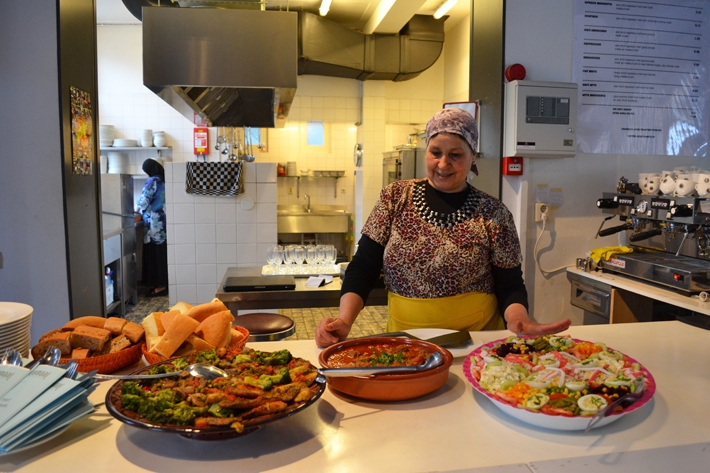
The Wijk Co-op is arguably a body designed to redistribute scarcity (in jobs, housing, and economic opportunity) through collective advocacy and organization. Nussbaum’s fifth point, that government and public policy be given a clear task, is another metric with which to evaluate the Co-op’s effectiveness. Freehouse has been both engaged with and subversive of existing systems of public policy and governmental regulatory agencies, and has proposed clear and specific improvements to policy. Finally, all of Nussbaum’s elements hint at an additional factor, that of resiliency. The efforts of the Co-op hinge on the emergence of trusting relationships within the neighborhood, and these networks produce sustainable mutual support structures in the form of physical spaces, services, and economic funds that residents can turn to during periods of duress. Therefore, an overarching measure of the neighborhood’s resiliency serves to provide evidence for its effective self-organization, promotion of equity and distribution of scarcity, and leverage in the realm of policy.
Self-Organization
Freehouse and the Wijk Co-op are in a period of transition during which one is setting up the infrastructure for the other to eventually become a self-sustaining organization with its own decision-making process, separate from Freehouse. Although the Co-op has the benefit of building on a five year foundation of relationships and activities developed by Freehouse, it currently faces the problem of getting more people to sign on to this new organizational form. The Co-op operates at the scale of a neighborhood, including all of its various demographics, businesses, and geographies, whereas Freehouse intervened at a smaller scale, in specific activities like the Market, and attracted a sub-strata of residents involved in those activities. A seeming shift in both name and purpose can be confusing to people in several ways. One distinction is that though Co-op, like Freehouse, is deployed strategically around specific issues, it is territorial by nature, and thus people must be motivated to join not simply because of a single issue, but because they are invested in the larger potential of the Co-op as a community organization. Issues of trust are also crucial: trust that this new organizing force will benefit them in the long-term, trust that individual needs will be met and voices will be heard, trust that the untested Co-op will actually be able to accomplish its goals of economic and cultural reinvestment in the community. According to Jeanne van Heeswijk, part of this trust-building involves encouraging new members to buy into the idea that the Co-op requires “durational, repetitive collaboration” —the building of a group in which individual members understand one another and act together.[15]
These collaborations are not always project-based and do not always lead to direct gain for all the members, but are necessary to create the infrastructure for a flexible, pluralistic organization. This generalized capacity can lead to compounding opportunities resulting from productive interactions between neighborhood stakeholders that will benefit members in unanticipated ways. Annet van Otterloo, part of Freehouse since 2008, says that integrating new people into the culture set up by Freehouse can be difficult—potential new Co-op members look for established models of neighborhood organizations that they are familiar with, and the Wijk Co-op is a new model that can seem overly complex, as an umbrella organization encompassing and coordinating the efforts and interrelationships of many smaller stakeholder co-ops. But, she argues, the Co-op must be complex so that its infrastructure can facilitate all the possibilities that might arise in the future. Whereas businesses are typically focused on short-term profits, the Co-op is thinking forward fifty years and building itself elastically to accommodate unknown futures.[16] The organization’s desire for such a sweeping, multivalent reach combined with its need for many new members are interlinked; more members lead to more demonstrable benefit for each but likewise requires the Co-op to venture into many more areas of activity and growth. Combined, these aspects create a formidable barrier that discourages people from joining.
Freehouse has responded to this challenge by solidifying the formal structure of the Co-op—they are slowly hiring more local people to run the Co-op as part of its operational team, doubling their numbers in the last year and recently hiring an interim Director. They have board and team meetings once a week, and have hired operations members who literally go door-to-door to connect with the membership base. Jeanne van Heeswijk, a trustee of the Co-op, laments that she is more involved than she would like to be at this stage, but that going from a loose, informal group to a more structured organization is a “constant and necessary struggle.”[17] The expansion of the operational base has led to a process that Annet van Otterloo calls “doubling”—Freehouse representatives will shadow the Co-op leadership in business meetings and negotiations, but are slowly trying to extract themselves from the processes necessary to run the organization. She notes that strategic and savvy communication is key; many people still see Freehouse as an art project, and that is not always desirable. Having new team members who can speak as representatives of the Co-op rather than Freehouse is increasingly useful. Who do you bring to the front to deliver the message? “We know exactly what we are doing,” she says, and part of that is “infusing the heritage of Freehouse into the Co-op,” but she cautions, “It is important not to over-communicate.” The Co-op’s mission is not a secret, but effective communication can be a delicate balance. Because of its attempts to appeal to so many constituencies, it must carefully calibrate its language to different groups in order to remain legible.
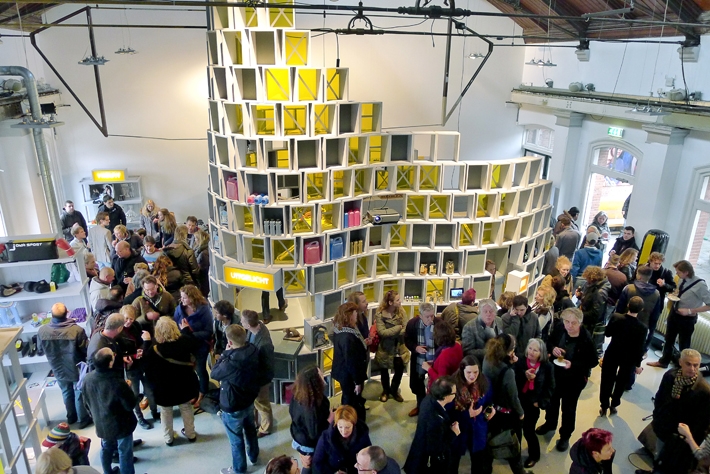
This careful outreach has started to yield some rewards. Radjesh Roepnarain, one of the new operations team members and “business experts” that recently came on board, has been liaising directly with the shopkeepers and the Shopkeepers’ Association, which is a member of the Wijk Co-op. As of October, 28 of 70 total retail storeowners in the community signed up for the Wijk Co-op, but his goal is to sign up all of them. “If one shopkeeper goes along,” he say, “they influence others that will eventually follow.” Johan is a shopkeeper who helped found the Shopkeepers’ Association, and I spoke with him at the January 2014 conference (he was one of the residents who participated in the formal handover). “The Wijk Co-op can address larger interests in the neighborhood,” he said. “We all have to decide how the neighborhood as a whole can profit from the structure.”[18] Communicating the sense of ownership and the holistic view that Johan expressed to more new members, as well as securing a series of small victories (like competitive collective purchase agreements for utilities, for example) to establish its effectiveness, is necessary for the Co-op to cohere organizationally into a truly self-run body.
Distribution and Value
One of the Wijk Co-ops’ main goals is to re-invest money that is earned by local merchants into the local Afrikaanderwijk economy so that it is accessible to an increasing proportion of its membership. Currently, businesses use major banks and contract with non-local services and vendors, in part due to the lack of local supportive service infrastructure (like cleaning services, payroll systems, and community banks). Becoming a member for the Co-op involves signing an exchange agreement that encourages this; for example, storekeepers must agree to preferentially buy their products from other local shops (when possible) or to hire local contract workers. There is also a stipulation in the membership contract that states they must contribute one product or service to the Wijk Co-op. Any profit made by the Cooperative is divided among the members: 25% goes towards education (such as certification programs); 25% goes towards social and cultural programs; and 50% is divided amongst the members in the ratio they contributed.[19] To be self-sustaining and to provide valuable opportunities to its members, the Co-op must generate its own income and provide educational and social programs of sufficient importance to compensate for potential losses. The non-profit Freehouse has been funded over the years from a mix of research grants and income (from the Neighborhood Kitchen or Workshop), which allowed it to stay politically independent. As a for-profit institution, the Co-op must now shift completely towards making its own money (it can no longer apply for grants nor receive charitable donations), but still manage to create opportunities and enhance the capabilities of its members. Ramon Mosterd, a financial and budget manager for both Freehouse and the Co-op, expects that within a few years the Co-op’s main source of income will be commissions and fees from its products and services, but in the start up phase they need to secure investment monies to enable the development of the organization’s operational base. This brings up the same chicken and the egg problem that impedes the recruitment of new members. As Mosterd describes:
Although there is the Freehouse history and network, the Co-op is a new organization. Therefore, the Co-op does not have its own track record yet. This makes it more difficult to convince new financiers, because we cannot show them figures and generated results yet. We need more time to prove ourselves, but in order to prove ourselves we do need budget and commissions first.[20]
Recently, the Co-op has implemented a few initial services that they hope will serve as models for future activities as well as core businesses. The first is a Cleaning Cooperative that hires and trains local workers, paid through the Co-op’s own payroll system, to clean the porches of 281 local houses. This is in contrast to the previous cleaning company, which brought in workers from outside of the neighborhood and spent locally apportioned city money on payroll and organizational overhead located outside of the Afrikaanderwijk. Successful Freehouse initiatives are also being sustained through the new Co-op structure; the Neighborhood Kitchen and Sewing Workshop are both self-sustaining collective businesses started by Freehouse that have transitioned into Co-op members, part of the so-called “ground floor” services of the organization. A new opportunity involving a housing complex for the elderly in the Afrikaanderwijk demonstrates the potential for the Co-op and Freehouse to work side-by-side. The two were invited to re-envision the structure of the home in order to implement an array of services, but also to encourage community-building between the elderly and different neighborhood groups (like students and business owners.) In this scenario, Freehouse would act as a research institute, designing and rethinking the layout and activities of the home, whereas the Co-op could take on services such as the restaurant: teaching cooking, visual arts and sewing classes, and cleaning.[21]
This kind of core service can support the broader mission of the Co-op itself as well as a sliver of its membership, but it provides little direct benefit for members like the shopkeepers. In this context, the value proposition of the Co-op mirrors Uitermark’s call for the equitable distribution of scarce resources through collective purchase models. By aiming to equitably provide resources (like insurance, energy, internet access, workspace and mobile phone service) that enhance business development but can be scarce and expensive, the Co-op attempts to divorce access to these resources from capital gain. This, in turn, increases the diversity of valuable opportunities available to individuals in the community. Though the organization is a long way from being able to provide these resources in a manner that is entirely independent of the wealth of specific Co-op members, their collective purchasing power mitigates the inequality of access. A recent example is the formation of an energy collective, which negotiated a much cheaper rate for the businesses within the Wijk. Depending on their usage, shops will see a savings of between $100 and $1700 Euros per year. However, Radjesh Roepnarain, who has been a key player in these negotiations, feels that these benefits are not coming fast enough for some members. Since they do not see the direct personal gain yet, they do not understand the greater potential. He would like to have five or six additional collective purchase agreements in place to undergird more broad-based activities.[22]
This may help shopkeepers realize that the profit of joint activities and services under the Co-op will not compete with their businesses, but rather reinvest in the Wijk infrastructurally or educationally. Exchanging joint services and products is a key factor in the overall profit loop, because simply socializing resources may do little more than help build more efficient capitalist businesses, increasing the amount of wealth in the hands of the few. The Co-op has also attempted to spur reinvestment in the community via membership fees, but the profit-sharing formula seems too feeble in these early days. The socialist exchange system used with collective purchase agreements, where businesses increase their capital only to reinvest that capital in the community rather than keeping it for themselves, makes it difficult to sign new members up—no small business owner wants to give up even the tiniest slice of often razor-thin margins. This is a key sticking point for the businesses and the Co-op moving forward. The question remains, will shopkeepers reinvest their savings locally to hire and expand their businesses, thus facilitating the emergence of new possibilities and talents inherent in the neighborhood?
A major tension arises when a resistant cultural form like Freehouse attempts to attract new active members in the formulation of the Wijk Co-op. Among the Co-op leadership, there seems to be an underlying acceptance that people will only support the Co-op insofar as it serves their self-interest, rather than because they have some commitment to a broader collective vision for the neighborhood. This puts the Co-op in the challenging position of having to compete with the private market, while convincing new members to invest in socialized forms of support available to the entire Co-op membership. The Co-op seems to be leveraging the long relationships built between neighborhood residents and Freehouse over the years to get people to sign on to a collective vision, as those residents are more willing to trust in the as-yet unseen benefits of such an organization. It is when new people who are unfamiliar with Freehouse become involved that the leadership is hitting a wall. They are attempting to satisfy some measure of members’ individual self-interest while simultaneously convincing them of a broader vision: in other words, they are trying to radicalize their membership. This is a risky prospect that could backfire if the Co-op cannot entice enough of its members to articulate an actionable and compelling collective vision that induces members to sacrifice for a larger social good.
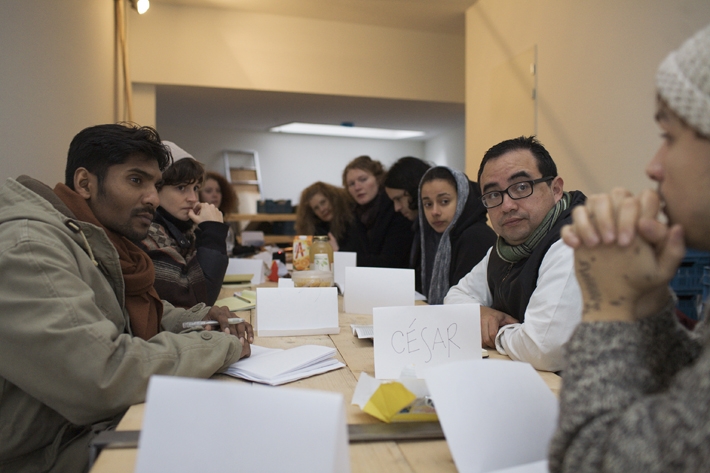
Political Power
Though the Co-op’s primary focus in this initial phase has been setting up its internal infrastructure, it has already been plunged into politics, albeit somewhat reluctantly. The pushback it has begun to receive from other neighborhood organizations in South Rotterdam indicates the group’s growing political leverage. As one friendly governmental administrator warned Jeanne van Heeswijk in a recent phone call, “Apparently you are doing your job really well, because you are already considered a threat.”[23] Some NGOs and other social organizations in the area see the Co-op as coming in strong because of its influence with neighborhood residents, and have expressed skepticism about the Co-op’s agendas. According to van Heeswijk, one of these organizations began telling people in the neighborhood not to become involved because the Co-op endeavor was “not to be trusted”. She believes that this might arise from the rightwing tendencies of the local government as they see the incubation of socialism as one of the Co-op’s intentions.[24] In these situations, the Co-op is forced to be politically savvy while striving to maintain its separation from any particular party ideology. This dilemma goes back to Annet van Otterloo’s cautious note about message: to select the right messenger to deliver the right message to the right people at the appropriate time.
Freehouse was founded with a very clear goal, which was to lobby policy makers regarding changes in governmental policies around permits in the Afrikaanderwijk Market. The political goals of the Co-op are less evident. As a point of contrast, the main housing corporation in the Afrikaanderwijk district (with which Freehouse works as well) started a redevelopment campaign for part of the main shopping district. Led by a classical “creative city” campaign using similar rhetoric to the Wijk Co-op, this group sought to set up collaborative pop-up work spaces in empty storefronts, like slow food labs and craft shops. This would involve, in van Heeswijk’s estimation, inviting outside “creatives” to catalyze industry in the neighborhood, leading at worst to imbalanced precarious work, an outflow of money from the neighborhood, and potential displacement down the line; and at best, to goods and services that current residents don’t really need or can’t participate in. Whereas the Co-op seeks to facilitate the entry of the immigrant working-class into the market system, focusing on the skills already present in the neighborhood, this campaign seemed happy to focus on benefitting a predominantly white creative class largely external to the neighborhood. They did not initially collaborate with the Wijk Co-op because they considered the Co-op “difficult to work with” and protective of its membership.
It is true that the Co-op protects the interests of its members, but that is its mission and purpose, rather than one of only creative or economic catalysis. The question remains how well it will be able to leverage its growing political power to positively affect policy changes that benefit residents (for example, routing public money towards low-income housing), and if it will be able to do so in the current political climate, defined by a rising right wing. Though the Wijk Co-op is already in the process of separating from Freehouse in its political leadership, it will become more necessary as it develops its own policy agendas moving forward to not be seen as the same kind of subversive institution.
Resilience
Creating resilient networks of people and their skills is the intangible benefit that undergirds all the activities of the Co-op, and to my mind, distinguishes it dramatically from problem-based social organizations and more akin to new urbanism projects. Jeanne van Heeswijk describes the difference between the Co-op’s method of durational insertion and a project-based social good operation:
We are not a group that just drops out of the sky to do a project because there is a pot of money. We were here before, we will be here again, we are still here, and we will work with you again. It is the building of a group that understands that we do this together, but that we do not always sit together. It is just that we are there, that we share a common ground in having interest in creating forms of resilience that don’t always have to do with direct gain, but our main argument is ‘we are still there.’ We don’t have target groups; we have a durational collaboration on a repetitive basis. It never stops.[25]
Though the true measure of resilience is difficult to quantify at this point, many of the Co-op’s activities over time serve to strengthen intergenerational and intercultural relationships between immigrants and native working-class Dutch, provide collective gathering and workspaces, and enhance the collective power of social networks. For example, the Shopkeepers’ Association organized a gift exchange for all the kids in the neighborhood over the holidays, and Co-op members and storeowners like Johan have begun to take on two or three teenagers each as interns (usually the children of Turkish immigrants, whereas Johan is white Dutch), thinking about the employment potential of future generations and creating cross-cultural relationships.[26] Every person I talked to cited the dramatic importance of building relationships, but how and when these relationships play out in a network of resilience must still be investigated. Do they result in a reduction in crime, recidivism rates, and youth dropout rates? Do they mitigate unemployment because strong social networks are better able to provide jobs? Do they result in increased economic investment in the neighborhood on the strength of the relations residents have with their local businesses and with each other? These are the questions that will be most relevant to the future development and survival of the Co-op.
Freehouse’s Continuing Role
The dowry that Freehouse brings to this marriage of art project and Co-op is knowledge and heritage. The heritage of Freehouse’s prior activities and relationships helped to launch the Co-op, and its knowledge helps to form the organization’s values of exchange, reinvestment, and solidarity. Right now, Freehouse is more involved than it would like to be, overlapping the activities of the Co-op’s management team and involved in hundreds of ongoing conversations with new members. Several of the Co-op’s board members are key Freehouse organizers, including Jeanne van Heeswijk. “I initially didn’t want to play that role,” she said, “but people felt it was necessary for me to be actively involved in giving advice.”[27] Ideally, Freehouse will be able to extract itself from this central role, and simply function as the cultural and research arm of the Co-op. It still sees itself as a laboratory for experiments, an institute that can create a self-sustaining Neighborhood Kitchen, and then move on to some new problem, some new capability. Its successes with seeding projects that are then taken over by local participants on a small scale (for example, the neighborhood’s collaborative work spaces) have provided a model for a similar exit at the Wijk Co-op scale, but the question remains: how can the experimental activities of Freehouse continue to be supported within the future structure of the Co-op?
Marcel van der Meijs, an urban planner involved with Freehouse as a board member since 2008, describes this issue eloquently:
Freehouse is fragile, yet flexible. [We] are afraid that the Co-op will become paralyzed and fixed, without the possibility of adaptation. When you try to create resistance and real economic change, you risk fixity of the institution.[28]
Freehouse is a necessary ingredient in the pliability and pluralism of the Co-op, so its exit strategy must be carefully considered. It continues to play an important role in experimenting with new projects and strategies to accomplish the goals set forth by the Co-op. Though it must part slowly from the Co-op to allow it to flourish and self-organize, it cannot go too far. It is a critical piece of the ecosystem, impossible to do away with and remain whole.
Some Concluding Thoughts
The question of how the Co-op can create a structure that is flexible enough to allow for disruptive experimentation is crucial, especially in light of its current difficulty in convincing potential constituents of its worth. Driving so intensely and with such focus towards demonstrable economic success (so as to convince more members to join, so as to leverage more power, so as to gain funding, so as to have more success) risks marginalizing the experimental, interventionist power of Freehouse and its capabilities approach. Where do the values that Freehouse espouses stop and the embedded values of the Co-op begin? Right now they appear to be quite similar, one the outgrowth of the other, but it is unclear if this will always be the case. The Co-op must be exceedingly aware of how it changes and why. It must always be questioning what agendas are driving it forward and whether it is living up to its values. And because it is self-produced, the vast diversity of cultures, education levels, economic classes, and individual agendas it encompasses must also be self-critical and reflective. This kind of culture, the culture of a neighborhood that is organized through cooperative methods, can only be built through millions of conversations, millions of interactions, crossing paths and working together millions of times. It is an intricate dance with no end, the prospect of a self-run organization that can be focused and reliable, flexible and expansive. This is a uniquely ambitious project, and the Coop has an enormous amount of work ahead of it. But it also has the potential for a unique kind of success.
Sue Bell Yank has a deep-seated investment in socially and politically-engaged art that can be traced to her years as a public school teacher in Lynwood and South Fairfax. She is currently an advisor for the Asian Arts Initiative’s Social Practice Lab and the granting organization SPArt, and was a curatorial advisor for the Creative Time Living as Form exhibition (2011). Her writing has been featured in exhibition catalogues, the Liverpool Biennial journal Stages, n.paradoxa feminist journal, Journal of Aesthetics and Protest, the Huffington Post, KCET Artbound, and various arts blogs including her ongoing essay blog entitled Social Practice: Writings about the social in contemporary art (www.suebellyank.com). She has been a lecturer at California College of the Arts, Otis College of Art and Design, UCLA, and USC.
Notes
[1] Ian David Moss, “Creative Place-making Has an Outcomes Problem,” Create Equity, posted May 9, 2012, http://createquity.com/2012/05/creative-placemaking-has-an-outcomes-problem/.
[2] Jeanne van Heeswijk, Skype conversation with the author, October 15, 2014.
[3] “Urban Vision 2030” by City of Rotterdam, January 2007, http://www.rotterdam.nl/DSV/Document/Stadsvisie/432312_Leaflet.pdf.
[4] Margit Mayer, “The ‘Right to the City’ in Urban Social Movements,” in Cities for People, Not for Profit edited by Neil Brenner et al. (New York: Routledge, 2012), pp.68-69.
[5] More about Henk Oosterling’s Rotterdam Skillcity can be found on his website, http://www.vakmanstad.nl/page/english.
[6] Freehouse’s activities are extensively documented, but this summary comes from several sources: The handbook for the “Radicalizing the Local” conference held from January 15-17, 2014, edited by Ashraf Osman; Skype conversations with Jeanne van Heeswijk on 10/15/14 and Annet van Otterloo on 11/19/14; and the text “Radicalizing the Local: Inclusive Urban Strategies,” available here http://issuu.com/ashrafosman/docs/eng_freehouse-send.
[7] At Home in Europe Project, “Muslims in Rotterdam,” Open Society Foundations, accessed February 25, 2015, http://www.opensocietyfoundations.org/sites/default/files/a-muslims-rotterdam-report-en-20101119.pdf.
[8] The organizations co-op includes both businesses and social/cultural organizations.
[9] Mark Stern, “Rethinking Social Impact: ‘We Can’t Talk About Social Well-being Without the Arts and Culture,” ARTSBlog, Americans for the Arts, posted May 1, 2012, http://blog.artsusa.org/2012/05/01/rethinking-social-impact-we-cant-talk-about-social-well-being-without-the-arts-culture
[10] Ingrid Robeyns, Review of Creating Capabilities: The Human Development Approach by Martha C. Nussbaum, University of Notre Dame Philosophy Reviews, posted September 23, 2011, http://ndpr.nd.edu/news/26146-creating-capabilities-the-human-development-approach-2/.
[11] Robeyns Review, http://ndpr.nd.edu/news/26146-creating-capabilities-the-human-development-approach-2/.
[12] http://plato.stanford.edu/entries/capability-approach/#Bib
[13] Achin Chakraborty, “On the Possibility of a Weighting System for Functionings,” Indian Economic Review, 31 (1996), pp.241–50.
[14] Justus Uitermark, quoting Susan Fainstein, “An Actually Existing Just City?” in Cities for People, Not for Profit, op. cit., p.200.
[15] Jeanne van Heeswijk, Skype conversation with the author, October 15, 2014.
[16] Annet van Otterloo, Skype conversation with the author, November 19, 2014.
[17] Jeanne van Heeswijk, Skype conversation with the author, October 15, 2014.
[18] Johan van Gool, conversation with author at “Radicalizing the Local” symposium, Stichting Freehouse, Rotterdam, January 17, 2014.
[19] Jeanne van Heeswijk, Skype conversation with the author, October 15, 2014.
[20] Ramon Mosterd, email responses to author’s questions, November 21, 2014.
[21] Radjesh Roepnarain, Skype conversation with the author, November 3, 2014.
[22] Ibid.
[23] Jeanne van Heeswijk, Skype conversation with the author, October 15, 2014.
[24] Ibid.
[25] Ibid.
[26] Johan van Gool, conversation with author at “Radicalizing the Local” symposium, Stichting Freehouse, Rotterdam, January 17, 2014.
[27] Jeanne van Heeswijk, Skype conversation with the author, October 15, 2014
[28] Marcel van der Meijs, conversation with the author at “Radicalizing the Local” symposium. Stichting Freehouse, Rotterdam, January 17, 2014.

